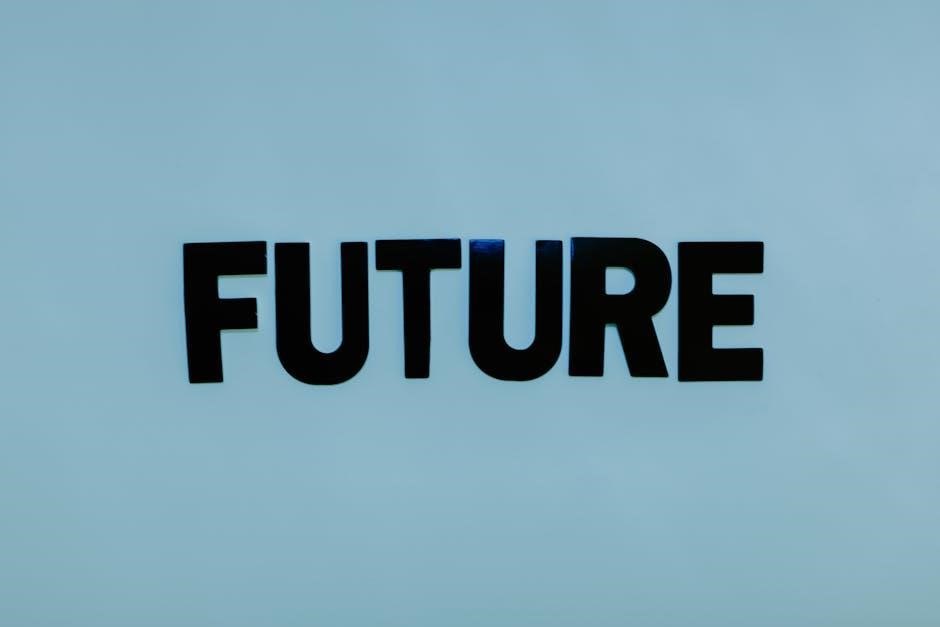Clear thinking is a valuable skill that enhances decision-making and problem-solving. Shane Parrish’s Clear Thinking PDF offers practical strategies to overcome cognitive biases and improve mental clarity, helping individuals make smarter choices and achieve better outcomes in both personal and professional life.
What is Clear Thinking?
Clear thinking is the ability to process information with mental clarity, logical reasoning, and awareness of cognitive biases. It involves making intentional decisions by recognizing patterns, evaluating evidence, and avoiding emotional interference. As highlighted in Shane Parrish’s Clear Thinking PDF, this skill enables individuals to navigate the critical space between stimuli and responses effectively, transforming ordinary moments into extraordinary outcomes through disciplined thought and intentional action.
The Importance of Clear Thinking in Decision-Making
Clear thinking is essential for making informed, rational decisions that lead to better outcomes. By fostering mental clarity and reducing cognitive biases, it enables individuals to evaluate options objectively, weigh pros and cons, and avoid emotional pitfalls. As emphasized in Shane Parrish’s Clear Thinking PDF, this skill is crucial for transforming ordinary moments into extraordinary results, ultimately driving personal and professional success through deliberate and strategic decision-making.

Barriers to Clear Thinking
Cognitive biases and emotional interference often cloud judgment, hindering clear thinking. Shane Parrish’s Clear Thinking PDF identifies these barriers as key obstacles to rational decision-making and mental clarity;
Cognitive Biases and Their Impact
Cognitive biases are systematic patterns of deviation from rationality, skewing decision-making. Shane Parrish’s Clear Thinking PDF highlights how biases like confirmation bias and anchoring bias distort reality, leading to flawed judgments and impeding clear thought. These mental shortcuts create illusions, causing misinterpretation of information and poor outcomes. Recognizing these biases is crucial for overcoming them, as they significantly hinder objective analysis and effective problem-solving in both personal and professional contexts.
The Role of Emotions in Clouding Judgment
Emotions often cloud judgment by creating mental fog, leading to impulsive decisions. Shane Parrish’s Clear Thinking PDF emphasizes how emotional states like fear or anger can distort rationality, causing individuals to react unconsciously rather than think clearly. This emotional interference hinders objective analysis, making it harder to evaluate information impartially. Managing emotions is essential for maintaining clarity and ensuring decisions align with long-term goals rather than fleeting feelings.
Strategies for Developing Clear Thinking
Shane Parrish’s Clear Thinking PDF outlines practical strategies, such as mental models and self-reflection, to enhance clarity and reduce cognitive biases, fostering better decision-making skills.
Practical Techniques for Improving Clarity
Shane Parrish’s Clear Thinking PDF emphasizes practical techniques like mental models, self-reflection, and structured decision-making. These strategies help individuals identify cognitive biases, organize thoughts, and prioritize clarity. By applying these methods, readers can enhance their problem-solving skills and make more logical, informed decisions. Regular practice of these techniques fosters a mindset of intentional thinking, leading to improved outcomes in both personal and professional contexts.
Overcoming Cognitive Biases
Shane Parrish’s Clear Thinking PDF highlights practical strategies to overcome cognitive biases, which are systematic deviations from logical reasoning. Techniques include recognizing confirmation bias, anchoring bias, and the Dunning-Kruger effect. By applying structured decision-making frameworks and engaging in self-reflection, individuals can mitigate these biases. The book emphasizes the importance of awareness and intentional thinking to make more rational and informed decisions, ultimately enhancing clarity in thought and action.

Real-World Applications of Clear Thinking
Shane Parrish’s Clear Thinking PDF demonstrates how clear thinking transforms decision-making, enhances relationships, and drives business success, offering practical tools for real-world scenarios.
Clear Thinking in Business and Leadership
Shane Parrish’s Clear Thinking PDF provides actionable insights for leaders, offering tools to enhance decision-making and overcome cognitive biases. By fostering clarity, leaders can make logical, informed choices, driving business success and innovation. The guide emphasizes mental models and practical strategies, enabling professionals to navigate complex challenges effectively and achieve better outcomes in their organizations.
Clear Thinking in Personal Life and Relationships
Shane Parrish’s Clear Thinking PDF extends beyond professional realms, offering strategies to enhance personal growth and relationships. By applying clear thinking, individuals can make intentional decisions, communicate more effectively, and navigate life’s challenges with clarity. The guide provides practical tools to reduce cognitive biases, fostering emotional intelligence and stronger, more meaningful connections in personal interactions and relationships.
Tools and Resources for Clear Thinking
The Clear Thinking PDF by Shane Parrish is a key resource, offering practical tools and mental models to enhance decision-making and cognitive clarity. Additionally, mind mapping, journaling, and structured frameworks provide effective methods to organize thoughts and improve problem-solving skills, aiding individuals in cultivating clearer thinking patterns.
The “Clear Thinking” PDF by Shane Parrish
Shane Parrish’s Clear Thinking PDF is a comprehensive guide to enhancing decision-making and cognitive clarity. As the founder of Farnam Street, Parrish offers practical tools and mental models to overcome cognitive biases and transform decision-making processes. The PDF explores how to recognize transformative moments, navigate critical spaces between stimulus and response, and cultivate intentional thinking. It emphasizes overcoming autopilot modes of thinking and provides strategies for achieving success and living a more intentional life.
Other Recommended Books and Guides
Beyond Shane Parrish’s Clear Thinking PDF, other books like The Art of Clear Thinking by Rudolf Flesch and The Opposable Mind by Roger Martin offer insights into cognitive clarity. Additional guides, such as Lessons Learned from SIGAR and resources on mind mapping, provide practical tools for improving decision-making and mental agility. These materials complement the core principles of clear thinking, offering diverse perspectives and strategies for personal and professional growth.
Mental Models for Clear Thinking
Mental models like First Principles Thinking and Second-Order Thinking are essential for clear thinking. These frameworks, explored in the Clear Thinking PDF, help structure decisions and reduce biases, enabling more logical and effective problem-solving in various life scenarios.
First Principles Thinking
First Principles Thinking, as discussed in the Clear Thinking PDF, involves breaking down complex problems into basic elements. By questioning assumptions and building from fundamentals, this method fosters innovation and clarity. It encourages individuals to think deeply, challenge conventions, and uncover novel solutions, making it a powerful tool for clear thinking and effective decision-making across various aspects of life and work.
Second-Order Thinking
Second-Order Thinking, explored in the Clear Thinking PDF, goes beyond surface-level analysis by considering the ripple effects of decisions. It involves anticipating how others might react and evaluating the long-term consequences of actions. This approach enhances foresight and strategic decision-making, helping individuals avoid unintended outcomes and make more informed choices in both personal and professional contexts.

Overcoming Cognitive Biases
Recognizing and addressing cognitive biases is crucial for clear thinking. Practical techniques like awareness, evidence-based analysis, and mental models help mitigate their impact, as outlined in the Clear Thinking PDF.
Confirmation Bias and Anchoring Bias
Confirmation bias and anchoring bias are significant obstacles to clear thinking. Confirmation bias leads individuals to favor information that aligns with their existing beliefs, often ignoring contradictory evidence. Anchoring bias involves relying too heavily on the first piece of information encountered, even if it’s irrelevant or outdated. Both biases distort decision-making and judgment. Shane Parrish’s Clear Thinking PDF provides practical strategies to recognize and overcome these biases, such as active listening and critical thinking exercises.
The Dunning-Kruger Effect and Hindsight Bias
The Dunning-Kruger Effect occurs when individuals with limited knowledge overestimate their abilities, leading to poor decisions. Hindsight Bias involves believing, after an event, that its outcome was predictable, distorting the accuracy of past judgments. Both biases undermine clear thinking by creating illusions of control and knowledge. Shane Parrish’s Clear Thinking PDF addresses these biases, offering techniques to cultivate self-awareness and improve decision-making by recognizing these cognitive distortions and their impact on reasoning.

Setting Personal Goals for Clear Thinking
Setting clear personal goals enhances mental clarity and decision-making. Shane Parrish’s Clear Thinking PDF guides readers in creating frameworks for intentional thinking, improving focus and outcomes.
Creating a Framework for Decision-Making
Shane Parrish’s Clear Thinking PDF emphasizes the importance of establishing a structured approach to decision-making. By identifying clear goals and objectives, individuals can develop frameworks that guide rational thinking. The book highlights practical strategies for overcoming cognitive biases and emotions, allowing for more intentional decisions. Parrish underscores the value of mental models and self-awareness in creating systems that foster clarity and precision. This approach transforms decision-making into a deliberate, outcomes-driven process.
The Role of Intentionality in Clear Thinking
Intentionality plays a crucial role in clear thinking, as it involves deliberate focus and purposeful action. Shane Parrish’s Clear Thinking PDF highlights the importance of living with intention, where decisions align with personal values and long-term goals. By cultivating mindfulness and avoiding autopilot behavior, individuals can enhance their ability to think critically and make choices that lead to meaningful outcomes. This intentional approach fosters clarity and purpose in both personal and professional realms.
Digital Resources for Clear Thinking
The Clear Thinking PDF by Shane Parrish is a widely accessible digital resource, offering practical tools for enhancing decision-making and mental clarity. Available on platforms like OceanofPDF.com and Farnam Street, it provides insights into overcoming cognitive biases and achieving intentional living, making it an essential guide for personal and professional growth.
Free PDFs and E-books on Clear Thinking
Accessing free PDFs and e-books on clear thinking is straightforward. Shane Parrish’s Clear Thinking PDF is available on platforms like OceanofPDF.com and Farnam Street. These resources provide practical tools to enhance decision-making, overcome cognitive biases, and achieve mental clarity. They are designed to help individuals navigate critical moments effectively, offering insights that can transform personal and professional trajectories. These e-books are invaluable for those seeking to improve their thinking skills and make intentional choices.
Online Courses and Workshops
Online courses and workshops on clear thinking are excellent resources for structured learning. Platforms like Farnam Street and Bookey offer courses that teach practical strategies for improving mental clarity and decision-making. These programs often include actionable steps, real-world examples, and expert insights, helping individuals develop the skills to think more critically and make intentional choices. They are ideal for those seeking a guided approach to enhancing their cognitive abilities and achieving personal or professional growth.

Exercises for Improving Clear Thinking
Regular exercises like mind mapping and journaling can enhance cognitive clarity. These practices help organize thoughts, reduce mental clutter, and improve decision-making abilities over time.
Mind Mapping and Journaling
Mind mapping and journaling are powerful tools for enhancing clear thinking. Mind mapping visually organizes thoughts, fostering creativity and clarity, while journaling clarifies ideas and reduces mental clutter. Both practices improve focus, enhance problem-solving skills, and promote introspection, helping individuals achieve greater mental clarity and make informed decisions.
Active Listening and Critical Thinking Exercises
Active listening and critical thinking exercises are essential for developing clear thinking. Active listening involves fully engaging with others’ perspectives, reducing misunderstandings, and fostering clear communication. Critical thinking exercises, such as analyzing arguments and evaluating evidence, sharpen the ability to make logical decisions. Together, these practices enhance mental clarity, promote rational reasoning, and improve overall decision-making skills, as highlighted in the Clear Thinking PDF guide.

Case Studies in Clear Thinking
Real-world applications of clear thinking are showcased in Shane Parrish’s Clear Thinking PDF, highlighting success stories and practical strategies for effective decision-making and problem-solving.
Success Stories of Clear Thinkers
Shane Parrish’s Clear Thinking PDF highlights inspiring success stories of individuals who transformed their lives and careers by adopting clear thinking practices. These real-world examples demonstrate how applying mental models and overcoming cognitive biases led to extraordinary results. From entrepreneurs to leaders, these stories illustrate the power of intentional decision-making and the impact of clarity in achieving personal and professional goals, proving that clear thinking is a catalyst for success.
Lessons from Failures in Decision-Making
Shane Parrish’s Clear Thinking PDF reveals how failures often stem from cognitive errors and emotional interference. By analyzing real-world examples, the book highlights the dangers of ignoring data, overconfidence, and groupthink. These lessons emphasize the importance of self-awareness, objective analysis, and structured decision-making frameworks. Learning from these failures provides a roadmap to avoid common pitfalls and cultivate clearer, more rational thinking in personal and professional contexts;

Habits of Clear Thinkers
Clear thinkers practice reflection, embrace lifelong learning, and apply mental models. Shane Parrish’s Clear Thinking PDF outlines these habits to enhance decision-making and reduce cognitive biases.
Regular Reflection and Self-Assessment
Regular reflection and self-assessment are cornerstone habits of clear thinkers. Shane Parrish’s Clear Thinking PDF emphasizes the importance of examining one’s thought processes to identify biases and flaws. By reflecting on past decisions, individuals can refine their mental models and improve future outcomes. Self-assessment fosters intellectual humility, encouraging a growth mindset. This practice, outlined in the book, helps cultivate clarity and consistency in thinking, leading to better decision-making and personal growth.
Lifelong Learning and Intellectual Humility
Lifelong learning and intellectual humility are essential for fostering clear thinking. Shane Parrish’s Clear Thinking PDF highlights the importance of continuously acquiring knowledge and remaining open to new ideas. Intellectual humility allows individuals to question their assumptions and seek diverse perspectives, leading to more informed decisions. By embracing lifelong learning, one can refine their mental models and adapt to changing circumstances, ensuring sustained growth and clarity in their thinking processes over time.

Future Trends in Clear Thinking
Future trends in clear thinking emphasize the integration of AI in decision-making and the growing importance of emotional intelligence to enhance cognitive clarity and strategic thinking.
The Role of AI in Enhancing Decision-Making
AI plays a transformative role in enhancing decision-making by analyzing vast data, identifying patterns, and predicting trends with precision. It reduces cognitive biases by providing objective insights, enabling clearer thinking. AI tools integrate with mental models to optimize decisions, while continuous learning algorithms adapt to new information, fostering smarter choices. This technological advancement supports clearer thinking by automating complex analyses and offering data-driven recommendations, ultimately empowering individuals and organizations to make informed decisions.
The Importance of Emotional Intelligence
Emotional intelligence (EI) is crucial for clear thinking, as it enables individuals to recognize and manage their emotions, reducing impulsive decisions. High EI fosters self-awareness, empathy, and effective communication, leading to better interpersonal relationships. By understanding emotional triggers, individuals can maintain clarity in stressful situations, making rational choices. EI also enhances problem-solving by considering diverse perspectives, ensuring decisions align with personal and professional goals. Cultivating EI is essential for fostering a balanced and thoughtful approach to life and work.
Clear thinking, as outlined in Shane Parrish’s Clear Thinking PDF, is a powerful tool for making better decisions and achieving success. Start your journey today!
Summarizing the Key Takeaways
Shane Parrish’s Clear Thinking PDF emphasizes the importance of mental clarity and rational decision-making. It highlights strategies to overcome cognitive biases, such as confirmation bias and anchoring bias, which often cloud judgment. Practical techniques like mind mapping, journaling, and active listening are recommended to enhance critical thinking. The book also underscores the value of lifelong learning and intellectual humility in fostering clear thinking. By applying these principles, individuals can make smarter decisions and achieve greater success in both personal and professional realms.
Encouraging Readers to Start Their Journey
Embark on your journey to clearer thinking with Shane Parrish’s Clear Thinking PDF, a transformative guide to smarter decision-making. By embracing practical strategies and mental models, you can overcome cognitive biases and unlock your full potential. Start today, and empower yourself to make intentional choices that lead to extraordinary results in your personal and professional life. The tools are here—take the first step toward clarity and success.

Additional Resources
Explore further with Shane Parrish’s Clear Thinking PDF and complementary guides like The Art of Clear Thinking by Rudolf Flesch. These resources offer practical tools for enhancing decision-making and mental clarity, available for download on platforms like OceanofPDF.com and Farnam Street.
Further Reading and References
For deeper insights, explore Shane Parrish’s Clear Thinking PDF, a comprehensive guide on decision-making and cognitive biases. Additionally, The Art of Clear Thinking by Rudolf Flesch offers timeless strategies for mental clarity. Both resources are available for download on platforms like OceanofPDF.com and Farnam Street, providing readers with practical tools to enhance their critical thinking skills and achieve better outcomes in personal and professional life.



